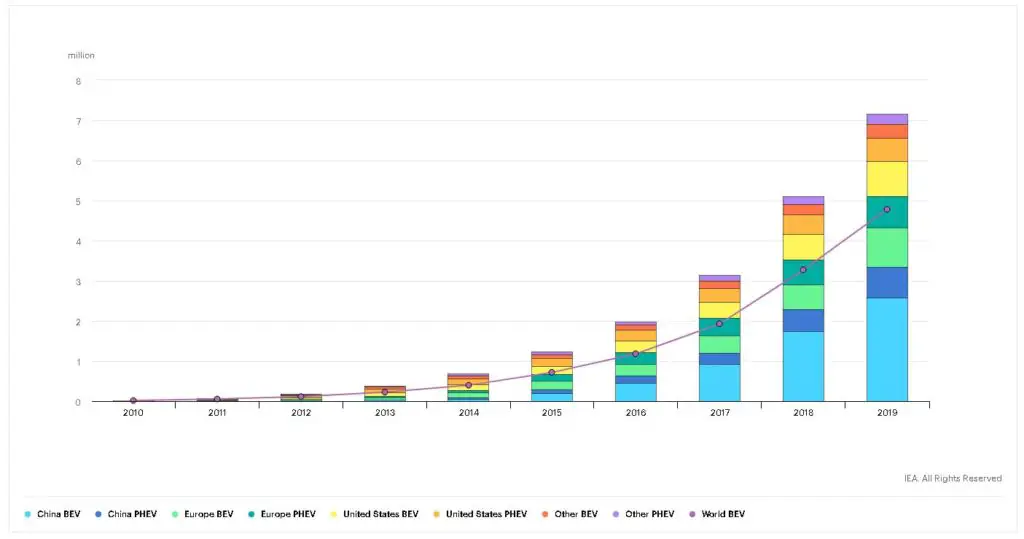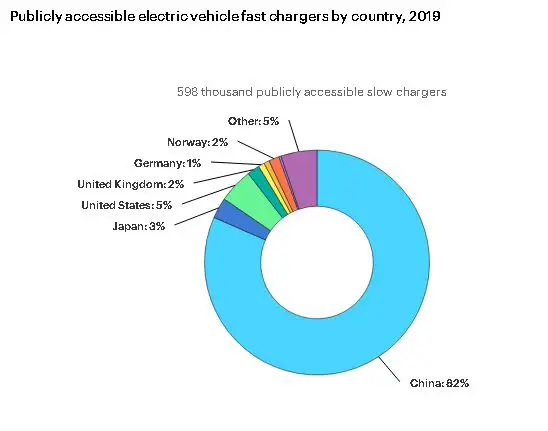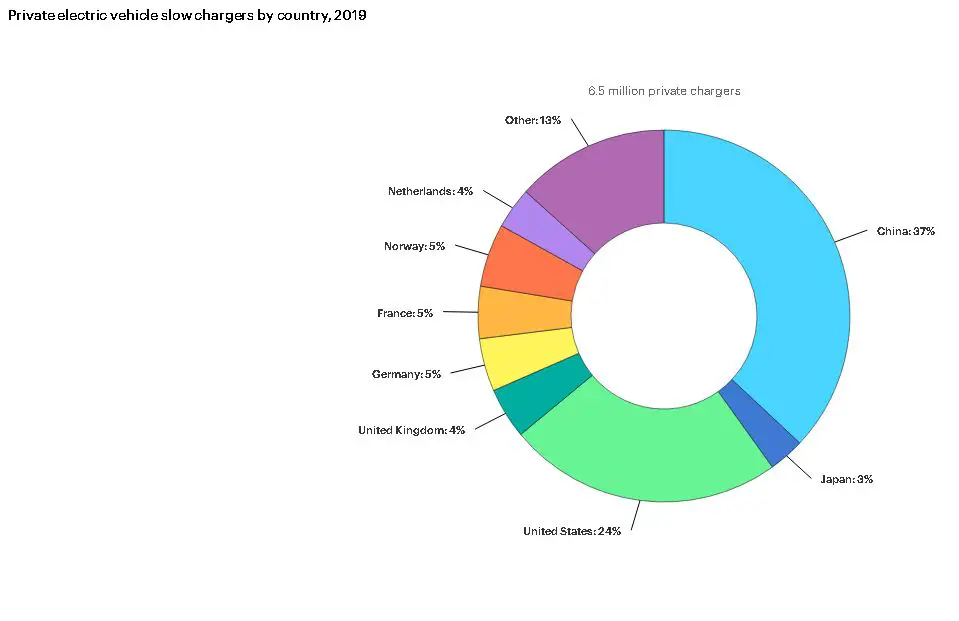Electric Charging Point Deployments Boomed In A Big Way Last Year
The International Energy Agency (IEA) has just added to the ever-expanding literature on electric vehicle adoption, with their 2020 EV Outlook report. The report analysis the rate changes in all sorts of aspects pertaining to electric vehicles, from their CO2 displacement, to the ratio of public to private charging points around the world.
Let’s focus on the second part , charging points. The growth in charging points represents an especially relevant topic for first-time EV buyers. How they perceive the improvements in infrastructure, can influence daily driving choices. We all know that most people charge at home, but seeing the numbers can really drive the point forward.
It will come as no surprise that China is leading the way in both BEVs and also publicly available charge-points. In the IEA chart above, you can see that between 2018 and 2019, China’s share of battery powered cars almost overtook most of the world combined.
The 2020s will likely see China take the final step in surpassing all new and old purchases, with over 4 million total.
As for chargers, there are now an astonishing 7.3 million on the globe, but 12% of which are public. Therefore, almost all charging stations, 88%, are in someone’s garage, either at home or work.
Private charging is far more common than public, due to cost and accessibility, something the IEA admits. That drives quicker deployment, and now means 10 times more private than public chargers. Still, there was a 60% increase in public chargers since 2018.
In 2019, there were about 7.3 million chargers worldwide, of which about 6.5 million were private, light-duty vehicle slow chargers in homes, multi-dwelling buildings and workplaces. Convenience, cost-effectiveness and a variety of support policies (such as preferential rates, equipment purchase incentives, and rebates) are the main drivers for the prevalence of private charging
Compared the number of chargers with the number of electric cars total. In 2019, 2.1 milllion new electric cars were sold. Now, they total 7.2 million electric cars and growing.
There are 100,000 less cars than chargers. With that we are on the right path to an increased headroom, which is needed to alleviate range anxiety and plug paranoia.
I highly recommend digging deeper into the IEA report, there is a lot to be gleaned from the charts alone. As most countries look to improve their EV situation, especially as a response to Covid, these outlook papers can make you hopeful for the way things are heading.


